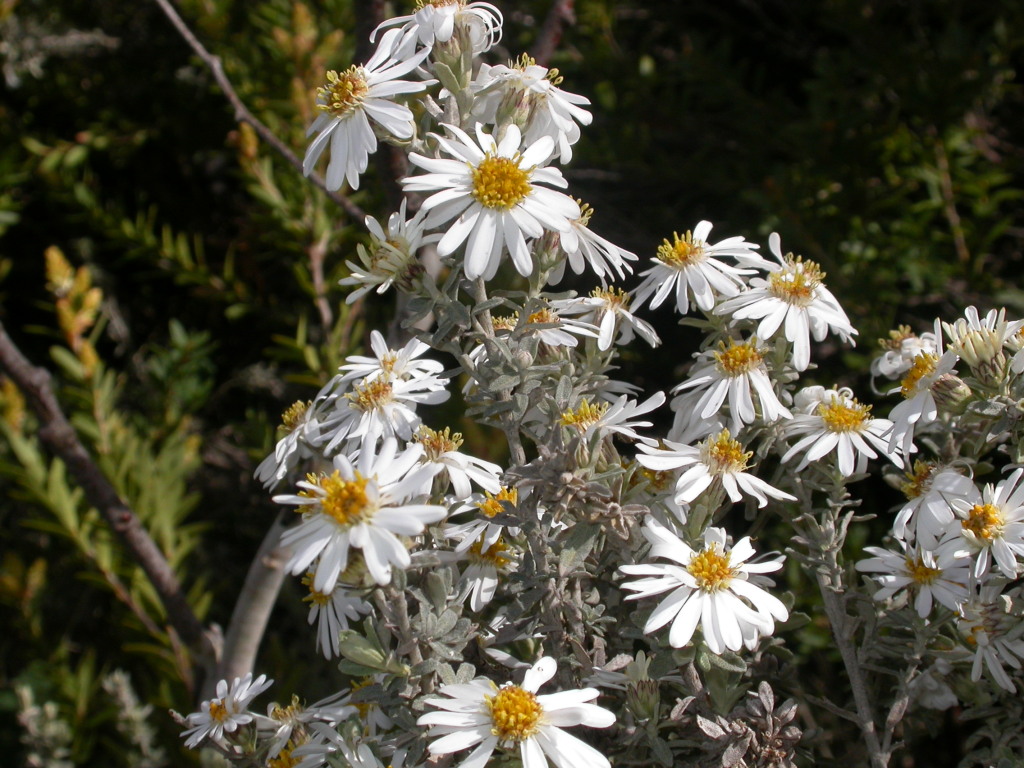Olearia brevipedunculata
N.G.WalshShrub to c. 1 m high; branchlets whitish-grey, with dense, minute, stellate hairs. Leaves alternate, sessile to subsessile, elliptic, oblong or obovate, 5–16.5 mm long, 2–6.5 mm wide; upper surface greyish, with mid-dense stellate hairs; lower surface whitish-grey, rarely yellowish when young, densely stellate-hairy; venation largely obscured by hair; margin entire to irregularly and shallowly crenate. Capitula 15–22 mm diam., solitary and terminal, sessile or on short peduncles not exceeding the subtending leaves at anthesis but sometimes elongating to 15 mm long in fruit; involucre ± hemispherical, 4–7 mm long; bracts 3–4-seriate, graduating, pubescent. Ray florets 12–22, white, ligules 5–10 mm long; disc florets 14–30, yellow, glabrous or with a few short papillae at the tips of the lobes. Cypsela flattened-cylindric, obscurely 6-ribbed, 2–3 mm long, sericeous, sometimes glandular; pappus bristles 4–6 mm long. Flowers Dec.–Jan.
VAlp. Also NSW. Occasional in shrubland and heathland of the Bogong High Plains and adjacent alpine areas, with an isolated records from Mount Buffalo and near Mt Kent, usually above treeline.
The illegitimate name Olearia phlogopappa var. subprepanda (DC.) Willis has previously been misapplied to this species in mainland Australia (Walsh 2004). Olearia brevipedunculata is distinguished from O. phlogopappa by its short peduncles and more or less concolorous leaves that retain a moderate cover of stellate hairs on the upper surface.
Also see note under O. phlogopappa subsp. serrata.
Walsh, N.G.; Lander, N.S. (1999). Olearia. In: Walsh, N.G.; Entwisle, T.J., Flora of Victoria Vol. 4, Cornaceae to Asteraceae, pp. 886–912. Inkata Press, Melbourne.
 Spinning
SpinningWalsh, N.G. (2004). Olearia brevipedunculata (Asteraceae): a new species from alpine areas of mainland Australia.. Muelleria 19: 95–99.

